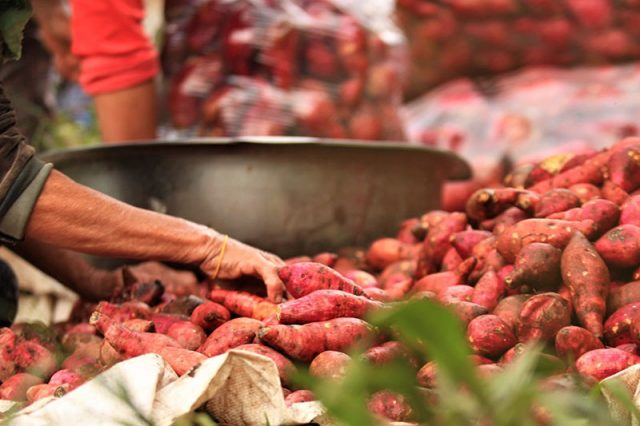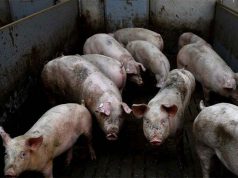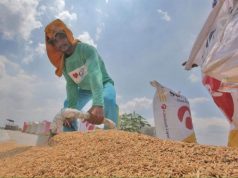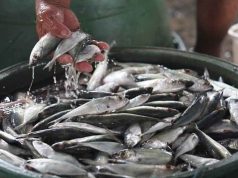
A lawmaker’s suggestion to promote kamote or sweet potato as an alternative to rice — a staple among Pinoys — in response to a possible rice shortage earned several comments from the online community.
Rep. Janette Garin (Iloilo, First District) on Tuesday made the suggestion to the Department of Agriculture after the Federation of Free Farmers (FFF) warned there could be a crisis in rice supply by 2023.
The group attributed it to the impacts of Super Typhoon Karding, especially on Central Luzon, considered the Rice Bowl of the Philippines. They also factored in the decline of the output of unhusked rice due to the high cost of agricultural inputs.
“The damage of ‘Karding’ is between 5 to 10 percent of the country’s rice total production,” FFF national manager Raul Montemayor was quoted in a radio interview last month.
“The estimate of the Department of Agriculture (DA) is about P2 billion. But this is expected to double, since it has yet to assess all the affected areas, so we’re looking at around P4 to P5 billion,” he added.
According to Montemayor, the county’s rice supply is stable this year, but the national buffer stock will be depleted by 2023.
“Our worry is the supply for next year, the excess from 2022 will be limited. The government needs to work double time to increase the production to lessen our dependence on rice imports, which is very expensive,” he said.
“Based on the estimate of the DA, the rice output will decline by one million metric tons of play [unhusked rice] as farmers did not use enough fertilizers and pesticides because of the high cost. Others decided to limit the number of hectares they planted,” Montemayor added.
Garin, in response to the concerns, said that the DA should increase the production of sweet potatoes and “make the necessary investment in root crops in terms of agricultural research, food technology, or marketing.”
“The nutritious content of rice cannot compare to that of kamote since rice transforms into sugar in the body, making one susceptible to diabetes, while kamote is high in fiber and is one of the best foods that one can eat to prevent cancer,” the lawmaker, a former health chief, said.
She also encouraged restaurants to try to use sweet potatoes instead of serving rice and french fries.
“Kamote can bring back health and keep some health problems at bay. As medical studies have shown, kamote lowers hypertension, bad cholesterol, and even blood sugar when taken as a substitute for rice,” Garin said.
She also claimed that countries like South Korea, Japan and the United States regard sweet potatoes as part of their daily diet.
The lawmaker clarified she was not against completely halting rice production but for root crops to be included in one’s diet.
Some Pinoys agreed with Garin’s suggestion to explore sweet potatoes as alternatives due to their health benefits.
“This actually makes sense. A lot of communities subsist on camote. Rice isn’t the only [carbohydrate] source out there. It would do the country and our health better if we diversify our plates,” a Facebook user said.
“It’s healthier too! And you can plant them in a (sic) huge buckets and they grow like crazy. You don’t need to have a big area to start planting a few food items that you consumed [on] a daily basis. Be creative and you’ll survive. And if you wait for politicians to do something about it, you’ll definitely go hungry,” another Pinoy said.
Others, however, urged the government to think of more “long-term” solutions to the possible rice shortage.
“Long-term solution, support our local farmers,” a Facebook user said.
“We are [a] rice producer in Asia, just support it!! Provide incentives to farmers!!” another Filipino wrote.
“Tell [that] to the marines. There is nothing wrong eating cassava, sweet potato, corn, saba. The question is, kayanin [kaya] ng elected officials and the rest na kainin everyday? Besides mahal din per kilo ng mga nabanggit ko. What we need is a remedy why rice is expensive… [and] why fertilizer is so expensive? Kahit gustong magtaninm ng ating mga farmers, kung mahal ang abono…” a Facebook user said.
Others commented that sweet potatoes are also pricey nowadays.
“Kamote is also pricey. Market price P50/kl,” a Pinoy claimed, referring to kilograms.
“Camote cost 35php to 40php here in my part of Mindanao, at that price you can buy an NFA rice or those cheaper rice,” another Facebook user claimed, referring to the state-subsidized rice sold by the National Food Authority.
According to DA’s price monitoring at Metro Manila markets as of October 26, a regular milled local commercial rice costs P38 per kilogram.
Last August, it was reported that the retail price of sweet potatoes in the local market had risen to P55 per kilo due to limited supply.
The government last October 11 said it will boost its budget for rice buffer stocks by around 70% next year to ensure there will be enough supply in times of global food shortages and emergencies.
The NFA’s allocation for rice purchases from local farmers will increase to P12 billion under the proposed 2023 budget, from P7 billion this year.
The Department of Budget and Management said this will increase the NFA’s buffer stock capacity to 15 days of national rice demand, from nine days.









